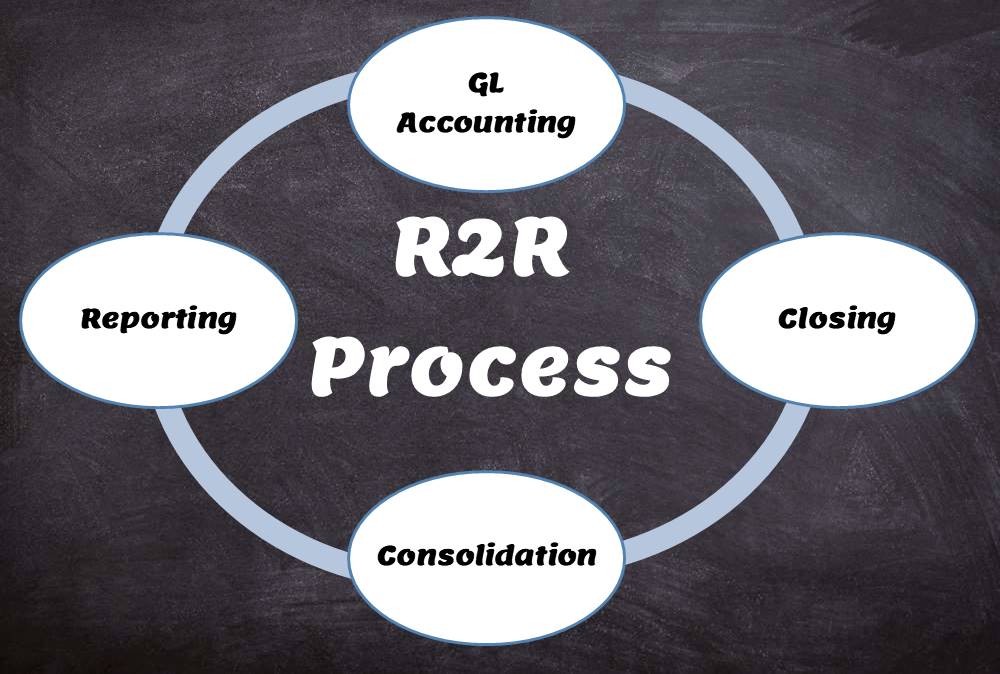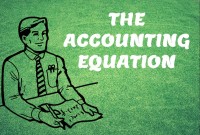- Home
- Business Processes
- Industry Knowledge
- Aerospace Industry
- Automotive Industry
- Banking Domain
- BFSI Industry
- Consumer/ FMCG Industry
- Chemicals Industry
- Engineering & Construction
- Energy Industry
- Education Domain
- Finance Domain
- Hospitality Domain
- Healthcare Industry
- Insurance Domain
- Retail Industry
- Travel and Tourism Domain
- Telecom Industry
- Leadership Skills
- eLearning
- Home
- Domain Knowledge
- General Ledger
- Record to Report Process
Record to Report Process
Record to report (R2R) is a finance and accounting management process that involves collecting, processing, analyzing, validating, organizing, and finally reporting accurate financial data. R2R process provides strategic, financial, and operational feedback on the performance of the organization to inform management and external stakeholders. R2R process also covers the steps involved in preparing and reporting on the overall accounts.
Definition of Record to Report Process
This function helps to assist the companies in the preparation and submission of various statutory reports that require in-depth and specialized domain knowledge. This process enables companies to consolidate global performance across various channels and create global income statements and balance sheets. This provides visibility to various channel heads to understand and comment on the key variance drivers with reference to plans and past years' performance. All the activities from recording to reporting of transactions are included in the "Record to Report" process also known as "R2R", “Account to Report”, “A2R”, General Ledger, “Finance & Accounting” process. People with extensive training/experience with knowledge of client/country-specific requirements are important for building an effective “Record to Report” process.
The R2R Process
The record-to-Report process is an end-to-end process that includes, general accounting, sub-ledger accounting, tax compliance, regulatory compliance, financial analysis, and reporting and interacts with the functions of budgeting and forecasting and internal and external audit. It includes all subsequent activities after the recording financial transactions related to the financial close consolidation, through the external reporting of the Company’s financial results. The R2R process ends with the completion of account reconciliations of balances generated during the financial close process.
The four core steps in the record to report process are
- General Ledger Accounting
- Closing of Books
- Consolidation of Accounts
- Reporting of Financials
1. General Ledger Accounting:
The processing cycle is where the majority of data required for the Record to Report process is generated. The R2R process begins when recording occurs in a general ledger singly or jointly on Management GAAP and Statutory accounting basis. This step happens once the maintenance and closure of sub-ledgers are completed. Recording transactions includes documenting revenues (by invoices or sales receipts), and entering purchases (in the account payable account) and expenditures (in the check register). This step sometimes also involves high-level accounting tasks, such as recording sales orders, tracking prospective customers, and projecting sales opportunities and cash flow.
To record and classify a transaction to appropriate accounts, a proper understanding of the accounting equation is and accounting standards and practices is a must. Calculating and summarizing transactions in a traditional accounting system is a tedious process and automated accounting frees accountants from these repetitive tasks by calculating and summarizing hundreds or thousands of individual transactions and generating reports to satisfy a variety of stakeholders.
2. The Closing Cycle:
Once the processing cycle is complete, the next cycle is to close the books. Closing of Management GAAP books is done following the common R2R Organizational Global Closing Calendar along with the closing of statutory accounting books. Close Cycle is the elapsed time for posting transactions to the general ledger and financial reporting systems through locking down the general ledger.
3. The Consolidation Cycle:
The consolidation cycle is the next pivotal step in the Record to Report process and this step allows companies to perform eliminations, reconcile intercompany balances and produce the data required to generate financial statements by entities. The consolidation cycle must address both internal and external reporting needs. Consolidation and elimination include completion of within and outside own Business eliminations, intercompany reconciliations, and other post-close activities leading to final financial statements at the consolidated “Consolidating Entity” segment level.
4. Reporting Cycle:
The reporting cycle is the formal process of data gathering, assimilating, performing analysis, and distributing the results. Throughout a leading practice close and consolidation cycle, management is receiving reports that address key indicators and statistics. The key to this process is the flow of the information necessary to provide accuracy in an efficient manner. This would include information from all source systems and sometimes requires a support process to accomplish it. Reporting cycle includes submission of financial data and commentary to the Organization’s Corporate Headquarters, external reporting, and government reporting.
The accounting system records the economic data about business activities and events, the next logical step is to prepare the business reports and provide them to the stakeholders according to their informational needs. The double-entry system enables accountants to prepare some standard reports like trial balance, profit and loss account, and balance sheet. Accounting reports are based on generally accepted accounting standards and these reports are powerful tools to help the business owner, accountant, banker, or investor analyze the results of their operations. Stakeholders use accounting reports as a primary source of information on which they base their decisions. They use other information as well. For example, in deciding whether to extend credit to a company, a banker might use economic forecasts to assess the future demand for the company’s products. The banker might inquire about the ability and reputation of the managers of the business.
Importance of Record to Report:
The accuracy and integrity of the financial statements largely depend on the efficiency of transactional bookkeeping activities. People with extensive training/experience with knowledge of client/country-specific requirements are important for building an effective “Record to Report” process. This function helps to assist the companies in the preparation and submission of various statutory reports that require in-depth and specialized domain knowledge. This process enables companies to consolidate global performance across various channels and create global income statements and balance sheets. This provides visibility to various channel heads to understand and comment on the key variance drivers with reference to plans and past years' performance.
Related Links
You May Also Like
-
Network Organizational Structures
The newest, and most divergent, team structure is commonly known as a Network Structure (also called "lean" structure) has central, core functions that operate the strategic business. It outsources or subcontracts non-core functions. When an organization needs to control other organizations or agencies whose participation is essential to the success, a network structure is organized.
-
There are two commonly used methods of accounting - Cash Basis and the Accruals Basis. Understand the difference between accruals and reversals. Recap the earlier discussion we had on accruals and reversals and see the comparison between these two different but related accounting concepts. Understand how the action of accruing results in reversals subsequently in the accounting cycle.
-
Trial Balance in General Ledger
One of the greatest benefits of using a double-entry accounting system is the capability to generate a trial balance. What do we mean by trial balance? As the name suggests a trial balance is a report that must have its debits equals to credits. Understand the importance of trial balance and why it is balanced. Learn how it is prepared and in which format.
-
A Company (also called corporation) may be understood as an association of persons in which money is contributed by them, to carry on some business or undertaking. Persons who contribute the money are called the shareholders or the members of the company. A corporation is an artificial being, invisible, intangible and existing only in contemplation of law. Being the mere creature of law, it possesses only those properties which the charter of its creation confers upon it.
-
This article explains the process of entering and importing general ledger journals in automated accounting systems. Learn about the basic validations that must happen before the accounting data can be imported from any internal or external sub-system to the general ledger. Finally, understand what we mean by importing in detail or in summary.
-
In this article we will help you understand the double-entry accounting system and state the accounting equation and define each element of the equation. Then we will describe and illustrate how business transactions can be recorded in terms of the resulting change in the elements of the accounting equation.
-
GL - Recurring Journal Entries
A “Recurring Journal” is a journal that needs to be repeated and processed periodically. Recurring Entries are business transactions that are repeated regularly, such as fixed rent or insurance to be paid every month. Learn the various methods that can be used to generate recurring journals. See some examples and explore the generic process to create recurring journals in any automated system.
-
An allocation is a process of shifting overhead costs to cost objects, using a rational basis of allotment. Understand what is the meaning of allocation in the accounting context and how defining mass allocations simplifies the process of allocating overheads to various accounting segments. Explore types of allocations and see some practical examples of mass allocations in real business situations.
-
GL - Understanding Chart of Accounts
A chart of accounts (COA) is a list of the accounts used by a business entity to record and categorize financial transactions. COA has transitioned from the legacy accounts, capturing just the natural account, to modern-day multidimensional COA structures capturing all accounting dimensions pertaining to underlying data enabling a granular level of reporting. Learn more about the role of COA in modern accounting systems.
-
Legal Structures in Businesses
Businesses not only vary in size and industry but also in their ownership. Most businesses evolve from being owned by just one person to a small group of people and eventually being managed by a large numbers of shareholders. Different ownership structures overlap with different legal forms that a business can take. A business’s legal and ownership structure determines many of its legal responsibilities.
Explore Our Free Training Articles or
Sign Up to Start With Our eLearning Courses

About Us
Learning
© 2023 TechnoFunc, All Rights Reserved









